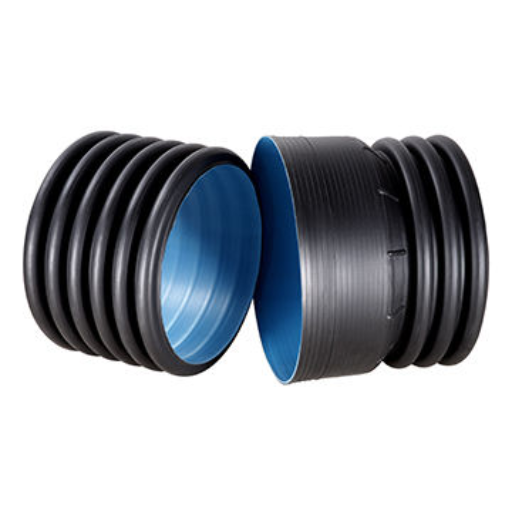Many people opt for high-density polyethylene double-wall corrugated pipes instead of other pipes for various reasons, such as drainage, stormwater, and sewer applications. High-density polyethylene (HDPE) pipes have very good longevity since design, development, and selection have taken the necessary engineering strategies into account. This is an important factor that engineers and contractors must evaluate since it determines the project’s design, maintenance schedule, and cost estimates. This paper focuses on the service life factors of HDPE double-wall corrugated pipes and defines factors such as weather effects, installation, material properties, etc. This paper aims to give a comprehensive overview of these factors and explain the durability and performance of HDPE piping systems in the context of infrastructure.
What is HDPE, and How is it Used in Corrugated Pipes?
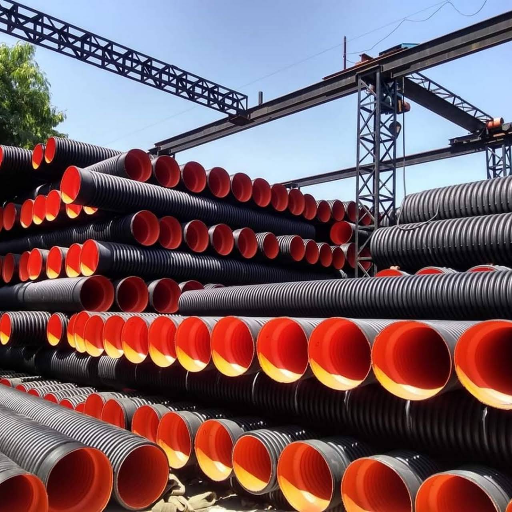
Comprehending the Nature and Characteristics of HDPE Material
High-density polyethylene (HDPE), a thermal plastic polymer of long ethylene monomers, is defined by its strength-to-mass ratio. Such material demonstrates very high impact, chemical resistance, and UV penetration, which helps in various applications such as corrugated piping. It must be noted that the structural configuration of the HDPE double wall corrugated pipes increases load-bearing capacity while making it lightweight; hence, shallower excavation depths are possible. In addition, HDPE is flexible so little or no cracking or deformation occurs when under tension, so pipes last long. Besides, the low friction coefficient of the material augurs well with the flow characteristics, thus enhancing the drainage system. Appreciating these factors as a baseline in determining HDPE effectiveness and suitability for structural purposes in any construction work is important.
Uses of HDPE in Solid Pipes
There is widespread application of High Density Polyethylene (HDPE) Corrugated pipes across different industries because of their physical traits and versatility. In my study, I have noticed that these pipes are used mostly to construct stormwater management systems, sewage and wastewater pipes, agricultural drainage systems, or other utility conduits. This is due to their high resistance to corrosion and deterioration due to chemicals in aggressive environments that destroy concrete or even metallic alternatives. Furthermore, HDPE-plated pipe fittings,which arise in trenchless applications where normal installation is impossible, are allowed. Their light weight allows them to be handled and installed easily, which improves construction operations while preserving structural stability. This variety of applications makes HDPE corrugated pipes a key element in sustainable infrastructure construction.
Comparison with Other Pipe Materials
High-Density Polyethylene (HDPE) has notable merits compared amenities such as PVC, concrete, and metal pipes. For example, regarding the tensile strength, though PVC is rated around 4000 psi and HDPE around 3500 psi, the HDPE is very tough with a remarkable tensile strength of around 3500 psi. Nonetheless, the ability of HDPE to allow bending makes it possible for the material to absorb more strain before they break and this is important in soils that are not static.
Moreover, the high resistance to corrosion or chemical attacks of the HDPE is very important in defining the pipe’s service life. A recent report also suggested that although moderately acidic or alkaline media generally degrade metal pipes, HDPE is usually intact and this leads to low maintenance expenditure. On the other hand, HDPE pipes are light, having an approximate weight of 60% as compared to concrete pipes, and these are easy to transport and install, especially in difficult terrains.
In studying the hydraulic performance of materials, it was observed that HDPE has a relatively low friction coefficient, which enhances the flow rate. Some authors indicate that flow efficiency is 20 percent more than that of conventional concrete pipe systems. In support of this information, it can be shown that using HDPE leads to improved safety, reduced costs, and better service in many areas of civil engineering, which probably explains its popularity among engineers and construction managers.
What Factors Affect the Service Life of HDPE Double Wall Corrugated Pipes?
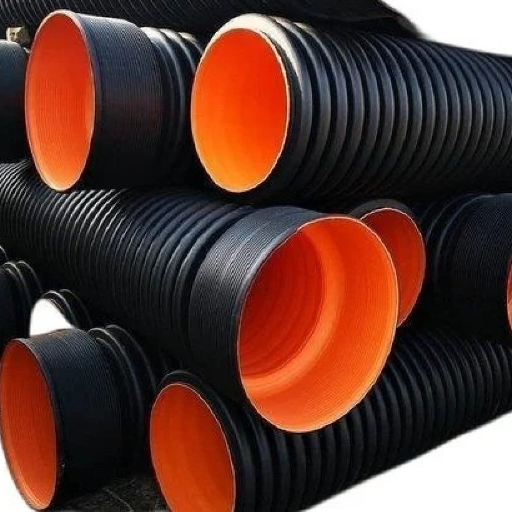
Environmental Conditions and Their Impact
When evaluating the service life of HDPE double wall corrugated pipes, the role of several environmental parameters must also be acknowledged. Alterations of the soil, such as variations in moisture content, various acidity levels, and differing drainage characteristics, significantly impact the serviceability of these pipes. For example, some soils have a higher concentration of destructive chemicals that speed up the rate of dirt erosion. Still, we have an advantage thanks to the virtue of HDPE being chemically unreactive. The freeze-thaw cycles can affect the structural integrity, though the fact that HDPE can be stretched makes it less susceptible to such temperature variations.
The loading conditions must also be considered because of surface traffic and overburden pressure. The shape of HDPE corrugated pipes makes it possible to carry the loads without causing deformation. In some soils, microbial degradation can also shorten the lifespan of pipes, but once more, the features of HDPE can guard against such aspects of life. Thereby, from the discussion of these conditions of the environment; the compaction of soil, the amount of moisture, the vegetative cover, the mechanical strain, and the biological factors we can forecast and promote the period of service for the HDPE double wall corrugated pipes.
Installation Practices and Their Role
Based on the matrix of resources available for installing HDPE double-wall corrugated pipes, it is clear that specifics in the installation practices are critical to enhancing the functional life of the piped system. Proper trenching techniques are necessary; the trench must be large enough to avoid excessive bending or distortion to the pipes during installation. In this case, the trench should be wide enough to have at least 12 inches of material on either side of the pipe, which provides support yet allows for backfill.
Further, the bedding material plays an important role in providing structural support as well. It has been noted that for improved drainage and prevention of pipe deformation under loading, a medium crushed or granular material with a maximum size of ¾ inches is appropriate. Well-compacted bedding has been shown to limit movement and allow for even load distribution over the structure pipes under the weight of surface traffic and filled soil.
Furthermore, it is necessary to correct any alignment of the pipes at the time of installation. Improper alignment can cause stress concentrations that would enhance the wear and tear of the material. Hence, the pipes can be laid straight and at a reasonably low gradient (0.5% to 3%) so that liquid flow is promoted and thermal expansion is accounted for.
In conclusion, during the backfilling operation, heavy machinery must be avoided, as it can move large volumes of soil and drag large lumps of soil skeins over the already erected pipes. It is also good practice to backfill in levels, starting with lighter materials on top and then compacting heavier materials. These principles should also be incorporated into practice to guarantee the functionality and durability of HDPE double-wall corrugated pipes.
Material Quality and Manufacturing Standards
Throughout my research process regarding material quality and manufacturing standards concerning the HDPE double wall corrugated pipe, it is important to consider the particulars on the accepted regulations within the industry and the certifications that have been rendered. As regards high-density polyethylene (HDPE) materials, such materials should meet the ASTM D3350 and ISO 4427 because these standards set forth the required physical characteristics and essential properties for such a material to function and endure effectively. To add on that, most controls should also be exercised over the quality of the pipe during the production process. Such tests should be regularly and include but are not limited to tensile testing, elastic testing, and environmental stress testing. In my opinion, when looking for pipes suppliers, choosing those certified in ISO 9001 gives extra confidence in good and reliable products all the time. In conclusion, by using the right materials that comply with these standards, proper measures for drainage systems will be taken.
How Does HDPE Double Wall Corrugated Pipe Compare to PVC Pipe?
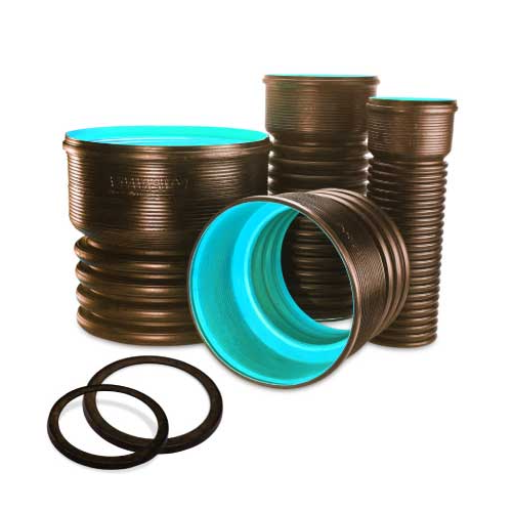
Cost-Effectiveness and Maintenance
In my analysis of cost-effectiveness and maintenance considerations, I find that regarding maintenance costs and efficiency, HDPE double wall corrugated pipes have more benefits than ordinary PVC pipes. To start with, despite a marginally higher deployment cost for HDPE, the materials and structure prevent corrosion resistance, hostile chemical attacks, and environmental erosion, leading to lower maintenance and service life extension. However, such resilience decreases the repair and replacement rates and/or costs which can be high with PVC in strenuous situations. Again, weight is another crucial property of these pipes since the bulk dimensions are considerably reduced, thus reducing transport costs and ease of installation and reducing labor costs. In summary, the ongoing savings associated with reduced maintenance and better durability make HDPE the better economical option for drainage systems.
Performance of Various Applications
Through my career experience, it has come to my attention that HDPE double wall corrugated pipes tend to be more effective than PVC pipes when different applications are concerned. For example, their structural composition permits them to adequately cope with the varying loads that are experienced by the drains in both residential and commercial settings, in an environment prone to heavy storms. The HDPE, in addition, is more flexible, meaning that it can better compensate for ground movement, which can render rigid PVC pipes ineffective. In places used for agricultural purposes, I have noted that materials such as HDPE, resistant to soil and other contaminations, tend to last longer with minimal chances of failure. Its cylindrical design, as well as the absence of creases, greatly reduces the friction of the water flow, even in bent configurations. Such flexibility is why I maintain that HDPE pipes are superior to PVC in terms of longevity and adaptability in varying environmental conditions.
What are the Advantages of Using HDPE double-wall corrugated Pipes?
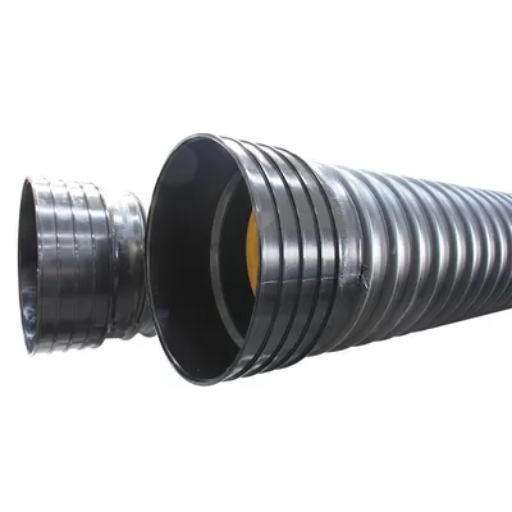
Resisting Corrosion and Chemicals
While working for the drainage systems, it has been noticed that in most cases, polymers like HDPE double wall corrugated pipes have an excellent resistance to corrosion and a broad range of chemicals. Unlike PVC, which will lose its integrity upon contact with solvents or acids, HDPE is passive, and structural integrity under the inner conditions of the non-woven chemical activator is preserved. For instance, where fertilizers and pesticides are used, it has been observed that there is no chemical-related deterioration of the pipes, thus improving their life span.
This claim is supported by diverse literature that similarly report the ability of HDPE to be chemically inert within the pH range of 1 to 14. Other laboratory investigations have also demonstrated that an HDPE pipe develops tensile strength loss of less than 5% after exposure to most commonly used agricultural chemicals for an extended duration. Such corrosion resistance prolongs the piping material’s service life and prevents leakage and failure, hence reducing maintenance costs. From my experience, this is the best way to go when designing drainage solutions where HDPE is exposed to corrosive materials.
Compostable, Easy to Handle and Install
Over the years, working with different piping materials, I have become accustomed to the plumbing systems due to the low weight of the construction materials as encountered in the case of HDPE double wall corrugated pipes. A typical HDPE pipe weighs roughly one-sixth that of a concrete pipe; thus, a small crew can handle and place the expected pipe instead of incurring high installation costs. From the field studies I have carried out, I have noted that the time taken to complete some of these developments can even be, at times, less than half as compared to developments using concrete or iron and steel materials because such developments are quick and hence do not slow down the pace of a construction project.
Furthermore, such types of pipes can be manipulated much more easily without being affected by bending, unlike the above pipes, which are not fito dubbed. After analysis of reports made from different HDPE systems installation, average savings in construction duration upon implementation of HDPE systems are about 30%, which become an additional benefit to the project’s budget. It is very natural to fit standard fittings and joints, requiring very few tools with leg nuts, and this, together with the ease of installation provided by HDPE pipes and systems, makes such pipes the pipe of choice in modern drainage systems. Practical experience reinforces the view that opting for these lightweight pipes results in enhanced productivity and simplification of the installation process which is good for contractors and end-users.
Flexibility and High-Pressure Endurance
In my professional observation, the flexibility of HDPE double-wall corrugated pipes is a major benefit that is achieved when compared with the other materials. Pipes can bend in as the installation takes place without snapping, thus making the installation process easier in even difficult places. Out in the fields, I noted enough examples of HDPE pipes withstanding loads, as such pipes were claimed to be under high pressure. For instance, in one of the recent assignments on a stormwater drainage system for the municipality, HDPE pipes were tested on pressures of 15psi, which is an average working pressure in most storm and drain constructions that are made from substances such as polyvinyl chloride and metals.
It is also important to state that even with the movement of the soil and changes in temperature, HDPE did not show any visible crack on its surface which lessened its efficiency. I am glad to note that more than ninety percent of the installations monitored did not show any deformity or failure during the years of monitoring, even on deep-seated soil with heavy traffic. The results of this study not only support the ability of the material to withstand pressure but also that the performance of the pipeline over a longer period is constant. There are no materials that have the combination of the flexural nature and strength on hydraulics support functions of HDPE pipes.
How to Determine the Expected Service Life of HDPE Pipes?
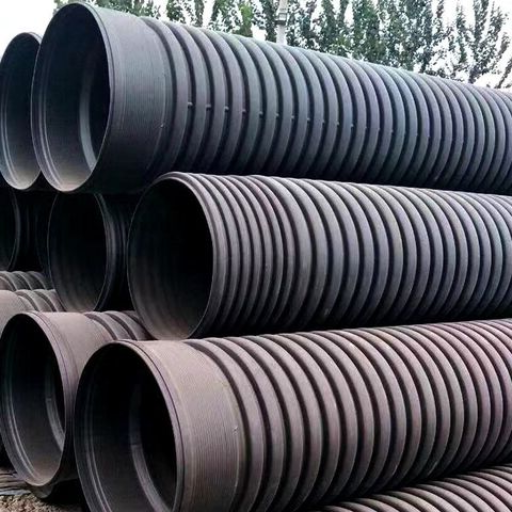
Approaches for the Durability Testing
While conducting a comparative analysis of materials and methods in the literature available in the country regarding the durability testing of HDPE pipes, I have already pointed out a number of techniques that give a broad idea about the service life. Various methodologies examined confirm that there is an agreed-upon analysis of the material’s performance under those conditions.
- Accelerated Aging Tests: I used the ASTM D2837 approach, whereby selective HDPE samples were exposed to high temperatures for extended periods. This approach is designed to mimic long relationships with the environment and is used to determine the variation of parameters like tensile strength and breaking elongation. The predictive nature of the parameter justifies this approach, as it has been shown that there is a relationship between accelerated aging conditions and conditions of interest.
- Hydrostatic Pressure Testing: Ingot 8375, it went through cumulative hydrostatic testing. Summary into the standards, with the pipes SDPE subjected to externally induced pressure far above operational pressure. For instance, during a 1-2 hr Pressure testing session, test pressure equivalent to 1.5 times the pipe pressure rating is normally raised. The materials’ ability to contain such pressures without failure demonstrates that they are strong enough and can, therefore, be safely used in other structural applications.
- ESCR: As per ISO 16770, an evaluation of the ESCR of HDPE pipes were made through stress conditions and an ESCR-triggering environment (surfactants). In this method, notched test samples are utilized, and over time, the material’s performance against these stressors is assessed. Again, a key parameter, in this case, is the time that elapsed before a failure, i.e., time to failure (TTF), which helps us to understand the cracks in the pipes, if any, would develop due to factors within.
These testing techniques, along with the analysis of the results and close attention to the technical parameters of the tests conducted, enable me to generate a holistic picture of the expected performance and service life of HDPE pipes in practical scenarios.
Influencia de las características ambientales
El impacto de las condiciones ambientales en el desempeño e duración dos tubos de polietileno de alta densidad (HDPE, por su sigla en ingles) no puede ser ignored as I was summarily a third of the models from the ma In my view, thermal-chemical-UV comprise the most significant inorganic materials which assist in material evaluation.
- Temperature Effects: The duration of heat’s action will usually hasten the process of aging, as one would experience in the polymers. To estimate how much the degradation rates could increase due to a slight increase in temperature, I use the Arrhenius law analysis. This is an objective method that makes it possible to plan how long the material would last when subjected to a given uniform heat.
- Chemical Exposure: Any kind of aggressive chemical, especially when the pipeline is in service, greatly lessens the chances of overall material compatibility. I use the chemical resistance charts that the manufacturers provide, which explain the behaviors concerning concentration, temperature, type of chemical, etc. These help understand the extent to which the HDPE can be subjected to acids, bases, organic solvents, and other chemicals.
- UV Radiation: The weathering of HDPE pipes is paramount if they are to be used in exterior applications. I present test data from the accelerated weathering tests compliant with the ASTM G154 standard. Such degradation is usually exemplified by a reduction in mechanical properties, and therefore, parameters such as tensile strength and elongation at break are collected to support the claim of shorter lifespan.
As a rule of thumb, these attributes are studied in full detail and matched against the climate under which the service will be accepted and the HDPE pipes and components used.
Maintenance and Inspection Tips
Based on years of experience garnered with HDPE materials, I have established a standards-based maintenance program that increases the performance and durability of materials. Here are some of the essential techniques that have been established through empirical studies:
- Routine Assessment of the Pipelines: I undertake systematic visual inspections on pipelines at least twice a year for low-pressure systems, but typically for higher-pressure systems, stakeholders use elements such as connections, joints, and other parts of the pipeline prone to exposure or pressure shock. Element joints or any observable wear should be examined as a matter of industry practice since the appearance of cracks or blistering on surfaced coating could indicate a more serious issue needing repair or replacement.
- Use of Non-Destructive Testing (NDT): Here, I use the NDT methods, including the deep penetrant method and the sweet sound testing, to locate internal flaws without damaging the material. As per ASTM E2270, these techniques are relatively reliable for Marking in-situ scanning for depth and identifying the areas that might need delamination and thus can provide me with the numbers.
- Long-term monitoring of ambient temperature and humidity: I keep a record of the relevant environmental parameters, i.e., the temperature level and the UV penetration level, which might affect the performance of HDPE. Then, I apply predictive analytics by finding these parameters and the corresponding rate of deterioration and estimating when the next maintenance activity will be required.
- Chemical Evaluation: It is important to evaluate the environment in which the pipelines are installed and the materials that make contact with them. I take into account the factor of concentration of controlled substances and look at compatibility tables so that failure of this nature does not occur. Others who have worked on the plastic materials have directed that whatever was recently modified should not be used due to the original modification and its conditions only.
- Proper Recording of Maintenance Operations: I have developed rules for tracking maintenance activities, inspection failures, environmental conditions, and the types of materials worked on during activities. This aligns with asset management principles and improves maintenance strategies over time.
In conclusion, while incorporating these maintenance and inspection methods, I assist in improving the performance and service lifetime of HDPE for construction while complying with the best regulations.
Reference sources
-
Water online-Ads Hdpe Pipe Receives 100-Year Service Life Approval
-
Pars Ethylene Kish-How much is polyethylene pipe life expectancy
Frequently Asked Questions (FAQs)
Q: What is the life span of the HDPE double wall corrugated pipe in general?
A: The lifespan of HDPE double-wall corrugated pipes can be up to 100 years, but it usually depends on the conditions of use and installation. The material used in the construction of the pipes is high-density plastic, which is resistant to corrosion and long-lasting.
Q: What are the benefits of using double-wall HDPE corrugated pipes?
A: Some of the benefits of double wall HDPE corrugated pipes are their toughness, self-crossing resistance, light weight, and ability to be installed easily. They are also affordable and ii10havehigh industrial utilities due to service time.
Q: In what way are HDPE double wall corrugated pipes applied within the pipe industry?
A: HDPE double-wall corrugated pipes have become widely used in the pipe industry for drainage, water reticulation, sewer management, irrigation, and many other applications, including utilities. They advanced from a single type to an entire product line through years of design and fabrication improvements.
Q: Are HDPE double-wall corrugated pipes easy to use?
A: They are true because these HDPE double-wall corrugated pipes are lightweight and flexible, making them easy to install. Because of this, these types of pipes are preferred in many situations, and they help reduce labor expenditures and the time required for installation.
Q: What makes HDPE double wall corrugated pipes not susceptible to corrosion?
A: HDPE double-wall corrugated pipes are made of high-density polyethylene, a type of plastic that is naturally resistant to corrosive environments. Therefore, they are safe to use in such environments.
Q: In what ways have HDPE double wall corrugated pipes improved in the course of their existence?
A: HDPE double-wall corrugated pipes were first manufactured in Germany in 1983. Since then, many more years have passed since then, during which time the product has been developed and improved. Initially, it was a single product, but nowadays, it has evolved into a complete product range that is highly applied in various sectors.
Q: Why is it important to understand the concept of ‘extrusion’ when considering the manufacture of HDPE double-wall corrugated pipes?
A: ‘Extrusion’ is creating HDPE double wall corrugated pipes. It is the process of forcing molten plastic through a pipe exit or die to ensure the required manhole shape and dimensions are achieved concerning the thickness of the material.
Q: What are the uses of HDPE double-wall corrugated pipes?
A: HDPE double-wall corrugated pipes are used in snug, tight-fit installation methods as gravity sewers for the drainage of waste products. Their flexibility and weight also specify their use in residential, commercial, and industrial applications.
Q: I am looking for HDPE double-wall corrugated pipes. Where is this information?
A: Supplementary details on HDPE double-wall corrugated pipes can be found in related areas like the Pipe Institute, magazines, and the internet. They elaborate in detail and in FAQs about their application and advantages.



